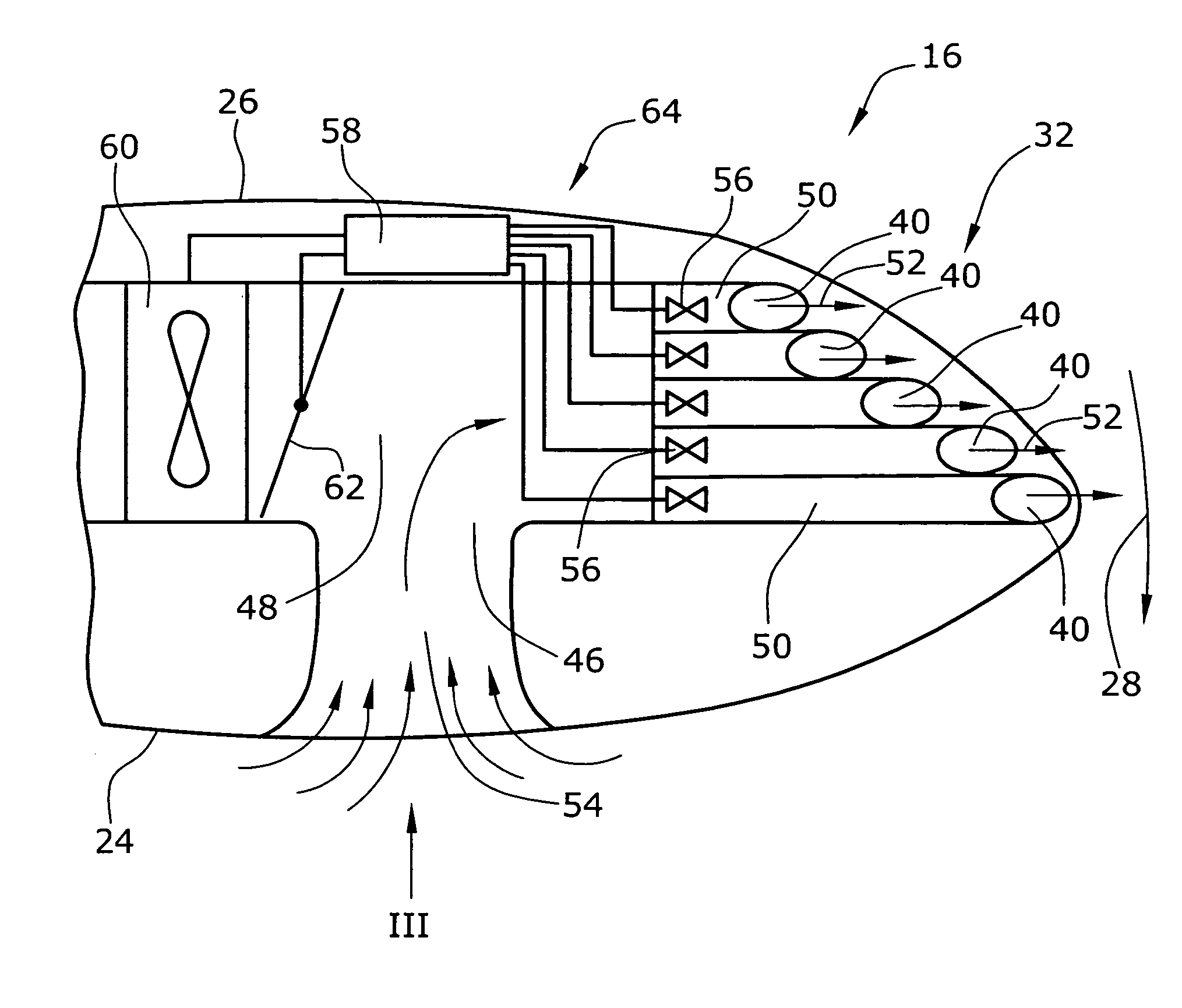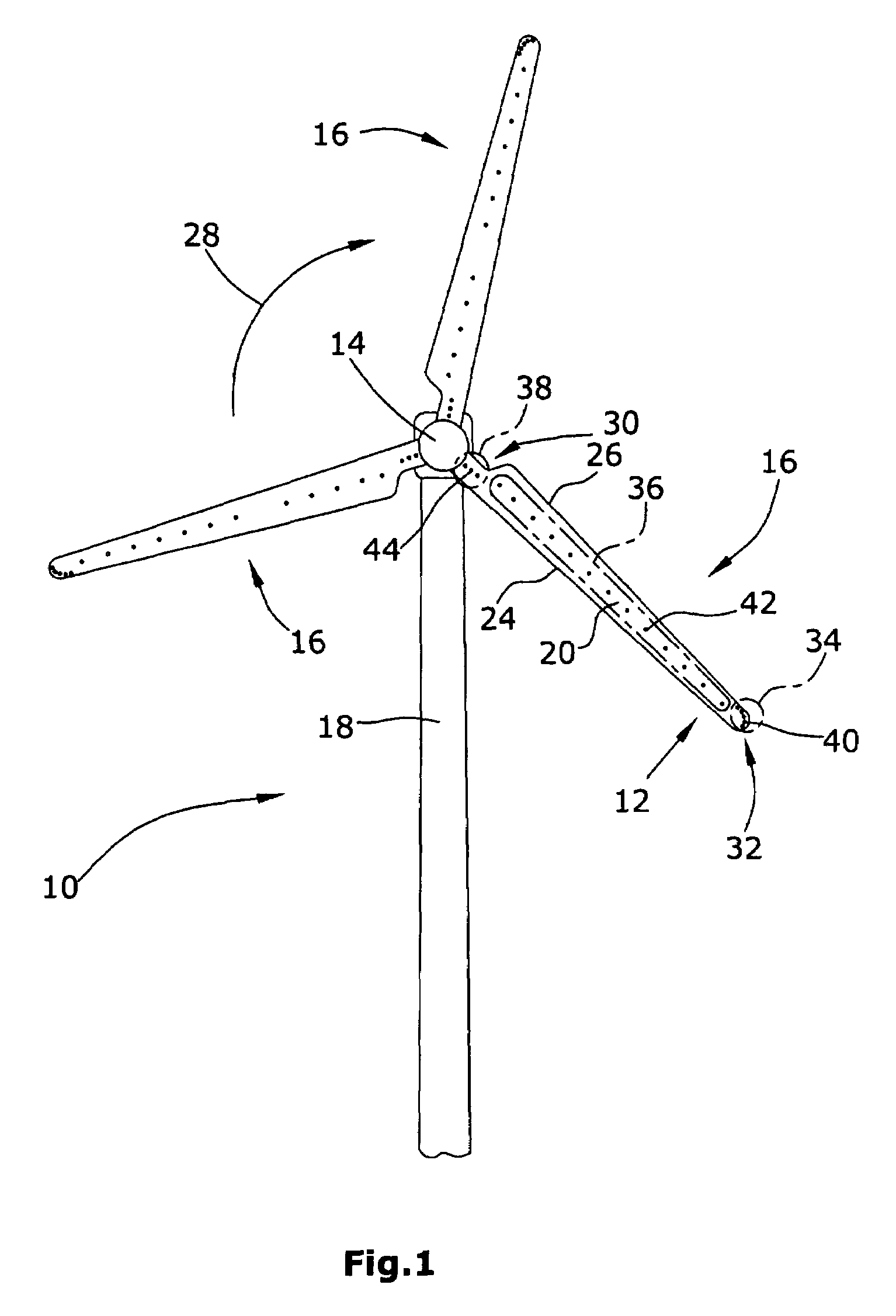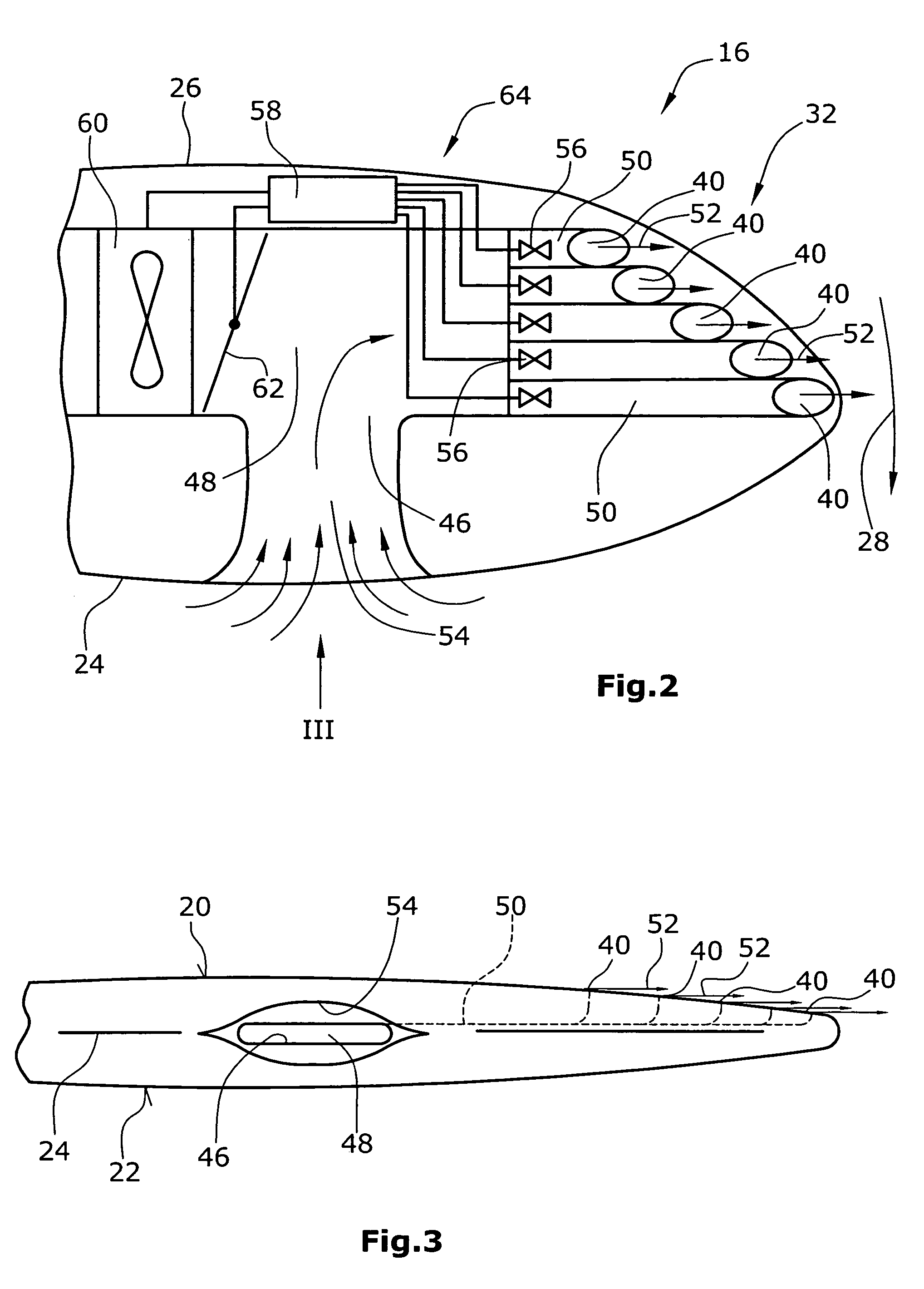Blade for a rotor of a wind energy turbine
a technology of wind energy turbine and blade, which is applied in the direction of machines/engines, mechanical equipment, transportation and packaging, etc., can solve the problems of root and tip vorticities, disadvantages not only in aerodynamic performance but also in generation
- Summary
- Abstract
- Description
- Claims
- Application Information
AI Technical Summary
Benefits of technology
Problems solved by technology
Method used
Image
Examples
Embodiment Construction
[0010]In one embodiment of the invention, at least one outlet opening for discharging pressurized air is arranged in at least one of opposite upper and lower faces and / or the trailing edge of the blade along which the upper and lower faces of the blade are connected, such as along the leading edge of the blade. The pressurized air is generated by means for generating pressurized air. This means can be operable as an active or passive means generating the pressurized air with the aid of a fan or the like or by receiving air of an air stream which the blade is subjected to during operation and releasing this air as pressurized air via the at least one outlet opening. In one embodiment, the means for generating pressurized air can be designed both as passive and active means.
[0011]The at least one outlet opening is, in one embodiment, arranged e.g. at the tip of a rotor blade in that face thereof which is subjected to suction of the air flowing along the face. Around the tip there is a...
PUM
 Login to View More
Login to View More Abstract
Description
Claims
Application Information
 Login to View More
Login to View More - R&D
- Intellectual Property
- Life Sciences
- Materials
- Tech Scout
- Unparalleled Data Quality
- Higher Quality Content
- 60% Fewer Hallucinations
Browse by: Latest US Patents, China's latest patents, Technical Efficacy Thesaurus, Application Domain, Technology Topic, Popular Technical Reports.
© 2025 PatSnap. All rights reserved.Legal|Privacy policy|Modern Slavery Act Transparency Statement|Sitemap|About US| Contact US: help@patsnap.com



